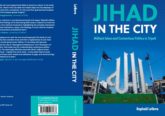The global Covid-19 pandemic has led an alarming transformation of the world’s social, economic, and political life. In that context, it is important to understand how the pandemic has added momentum to India’s inertial slide into a full-fledged Hindu majoritarian state. In India, Prime Minister Narendra Modi’s Hindu nationalist government has seized upon this public health emergency as an opportunity to strengthen its hold on Indian society. In this article, we examine how the Covid-19 pandemic has provided Modi’s single-party national government with fertile ground for advancing its Hindu nationalist project.
Vigilante Blame Culture
The global spread of Covid-19 has provided Hindutva organisations, which seek to merge Hindu and Indian identities, with a fresh target for their nationalist propaganda. In line with past trends where pandemics were disconcertingly blamed on or associated with minorities – such as gay men and HIV or African people and Ebola – the pandemic has been increasingly associated with the ‘Chinese’ people in India. The informal description of Covid-19 as a pandemic ‘manufactured in China’ due to ‘bad’ eating practices establishes a repertoire of bad behaviour. This deep rooted xenophobic sentiment against a historic adversary is being aggressively shared on social media, popular cultural platforms and everyday conversations. This has given space to humiliating attacks on people from the north-eastern states in India (neighboring China) because of the historically-attributed facial resemblance.
Entrenching Hindutva
With the spread of the outbreak, Hindu nationalist WhatsApp messages began to focus on Hindu-chauvinist discourses. Among other things, these messages alleged that India’s practice of greeting people with Namaste and upper-caste practises of ‘hygiene’ and ‘purity,’ as exemplified in vegetarianism and the indigenous traditional system of medicine (Ayurveda), have historically inoculated India from epidemics and pandemics. “India has never given the world an epidemic,” one such message proudly boasted; a blatant lie considering India’s historic seasonal outbreaks of dengue fever, malaria and chikungunya, along with regular domestic outbreaks of bird and swine flu. Hindu India’s alleged cultural superiority as embodied in the act of greeting people with the non-contagious Namaste was also harped upon by the Prime Minister and a sizeable ever-friendly section of the Indian media. It is important to clarify here that the object of our critique is a very specific strain of nationalist chauvinism that posits Hindu practices as superior and not a general pride in Hindu culture and supplementary medical practices, such as Ayurveda.
Another prevalent occurrence has been large religious congregations that leverage superstitious beliefs to defend against the scourge of the virus. One of the local leaders of the ruling party, who associated with Hindu nationalist organizations, hosted a cow-urine party on the 14 March, 2020. The organisation offered incense and cow urine to a demon-like caricature of the virus in an effort to seek divine intervention. Those present at the party were heard proclaiming the alleged ‘health benefits’ of drinking cow-urine. This became the focus of national and international headlines, which highlights the pervasive popular belief in religious myths over scientific facts.
Targeting Minorities
The government has also used the virus as an opportunity to demonize the country’s minority Muslim population, who were already being targeted through the Citizenship Amendment Act, which seeks to limit their ability to become Indian citizens. Since the onset of the Covid-19 crisis, government functionaries and the largely pliant mainstream media have steadfastly attacked the ongoing protests against the Act. Not only did the government not attempt any constructive engagement, its narrative decidedly otherized the protest led by women from the minority (Muslim) community. Last week, pro-establishment voices vigorously targeted the Muslim community for its perceived lack of cooperation after the attendees of an Islamic religious congregation tested positive for the disease. The aggressive targeting and profiling of those attendees led to strictures from the World Health Organization, which advised Indian government to refrain from religious profiling. They emphasized that infected individuals are not criminals but victims.
Conclusion
In choosing to propound and amplify cultural-chauvinism and quackery over proven interventions such as rigorous testing, social distancing, respiratory hygiene, and lockdowns, the Hindu nationalist ecosystem has capitalized upon a global public health emergency to further its own ideology. Marking a clear distinction between the ‘Chinese’ virus and the purity of Hindu culture has helped establish a boundary between ‘us’ and ‘them’.
Simultaneously, through the prescription of cow urine, cow dung, and Hindu chanting as a course of treatment, Hindu nationalists accomplish both boundary-marking and discipline. Where describing Covid-19 as ‘Chinese’ labels it as ‘their’ pandemic, prescribing the consumption of symbols of Hindutva as cures draws attention to ‘correct behaviour.’ Ultimately, the Hindutva response to the pandemic attempts to shore up its own constituency whilst denying the catastrophic danger Covid-19 poses to Indian society if left unrestrained.




